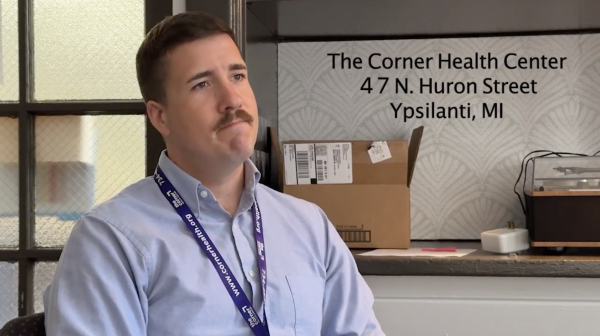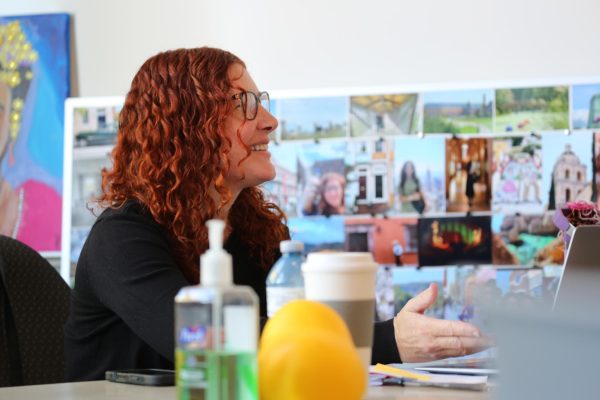Quality Over Quantity
Meeting with hundreds of students on the yearly, if not monthly, Community High School guidance counselor John Boshoven advises students at Community High School on anything from how to study for standardized tests to how to ask your grandmother for money for college. He is an all encompassing-encyclopedia of college knowledge, and one that Community students are able to access for free. Some of Boshoven’s advice is so simple, however, that many students don’t want to hear it.
One of the most common questions Boshoven is asked pertains to the highly anticipated standardized tests. From the ACT to the SAT, standardized tests are a reality for over 1.7 million students (according to College Board). These tests are, at a minimum, four hours long and evaluate student’s english, math, reading, writing and, in the case of the ACT, science as well. They are not structured like the everyday tests students take in class and because of that, require specialized studying. Many students have trouble grasping that.
“I hear from a lot of students, ‘I just don’t do those standardized tests very well,’” Boshoven said. “ So, it’s kind of like me saying to you, ‘I don’t play the harp very well.’ What would you suggest I do if I asked what I should do? Practice — so practice. That would be the same with a sports team or physical theater group — practice is going to help you.”
But when it comes to standardized testing, practice is not a quantity over quality situation: the type of practice matters. While SAT and ACT classes can be highly beneficial, if a student is able to pay the steep price-tag of $800-$1000, they can find just as much success in the classroom as out. It is all dependent on their dedication to the practice: whether that be at home or in a classroom. While the classes can help students find focus, they are yet another form of SAT and ACT information among hundreds of others. And when it comes to the pricetag, it is just another case of what Boshoven bitterly calls “the rich getting richer.”
“They’ve got a captive market,” Boshoven said. “They’ve got kids who are really worried about doing well; kids who haven’t practiced themselves and somehow think magic will occur; and they’ll go into one of these classes and get the magic key to the magic lockbox .”
Students who are unable to pay for specialized classes have the disadvantage of not having an organized entity that is forcing them to take time out of their day and practice. Beyond that, ACT and SAT classes are theoretically about as beneficial as the free resources available through Khan Academy (a company that provides free SAT practice), and Princeton Review. They provide, ultimately, a majority of the same information, just in a different format than that of a textbook or online video. “I think the kids that really utilize those course — utilize them the most doing the practice, doing the prep, and doing all the things who suggest — are just like somebody who is taking advantage of their violin teacher who says ‘do this a hundred times before we meet,’” Boshoven said. “I think that you’re likely to improve if you’re just disciplined enough to follow through.”
While the amount of money a student puts into their practice materials may be—in the long-run, irrelevant—the costs of the tests themselves is enough to convince some students to bow out of the college-search all together. College-search blogs like Ivy Wise, Test Rocker, and Ask the Dean advise students to take the SAT anywhere from one to three times, while other college advice columns, such as Prep Scholar, recommend anywhere from one-to-six attempts— and even then only so as to avoid “sending the signal you’re not taking the test seriously enough to prep each time.” If a student were to take both the ACT and SAT the generally advised number of three times each, their testing costs would be over 350 dollars, that figure not even including the costs of practices tests, classes, or other studying materials.
“The process of getting into college is just the beginning of expenses— wait till you get into college,” Boshoven said. “Everything related to college has gone up much faster than inflation— in part that is that the rich get a ride.”
Testing costs themselves can feel daunting, but the given price tag can be deceiving. While a majority of students do pay the fees, in whole, for all three tests out of pocket, there are many provisions provided by schools, and even college board, that may be able to help students cut their testing costs. Fee waivers are available for both the ACT and SAT for students from low-income families, and for for students that do not quite fall into that bracket, but still have difficulty comfortably paying for tests out of pocket, many schools provide free SAT practice tests. Many schools also provide a free SAT test run through the school, and sites like Power Score, Khan Academy, and Kaplan provide free practice tests and problems so that students can be their most prepared going into tests.
The biggest piece of advice Boshoven gives students is as simple as “practice, practice, practice.” At the core of standardized tests, that is the mile that makes the distance. “In many cases, it just takes discipline,” Boshoven said. “It’s not much different from people who practice playing the piano. So it’s a matter of making room for it, instead of hoping just magically your scores will improve.”









